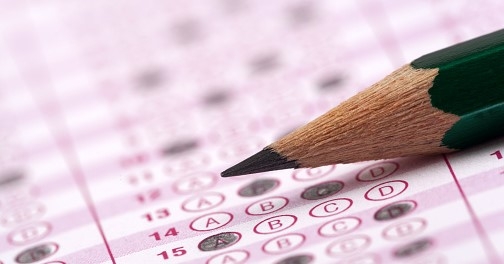You have /5 articles left.
Sign up for a free account or log in.

basar17/Getty Images
A new survey of colleges that have gone test optional finds that "solid pluralities of respondents believe that test-optional is improving access broadly for low income, underrepresented, and first generation students."
But the survey -- conducted by Maguire Associates -- also found that "institutions looking to grow first-year enrollment have largely been successful, but many are struggling to contain their discount rate."
Maguire Associates advises colleges on enrollment strategies, but the survey -- which received 250 replies -- was not restricted to its clients. Most survey respondents were the senior person in charge of enrollment at their college, but it also had some responses from more junior people and from presidents, provosts and chief financial officers. A majority of the survey's respondents were from private colleges, but it included 104 public institutions. (The public colleges tended to be larger.) Only a few community colleges, most of which do not require the SAT or ACT for admissions, participated.
One of the questions asked was about the impact of test-optional admissions. The following percentages indicate the number of colleges answering "somewhat" or "significantly improved."
Impact of Test-Optional Admissions
| Indicator | Public | Private |
| Application volume | 55% | 48% |
| Applications from historically underrepresented student populations | 56% | 45% |
| Enrollments from historically underrepresented student populations | 52% | 38% |
| Applications from students with financial need | 48% | 37% |
| Enrollments from students with financial need | 42% | 33% |
| Applications from first-generation students | 49% | 34% |
| Enrollments from first-generation students | 44% | 30% |
Public institutions saw the greatest gains. For all groups, the increases were greater for applications than for actually enrolling students.
In terms of what colleges used instead of test scores, the survey also found gaps between public and private institutions.
"Among respondents from test-optional institutions in fall 2021, most (74 percent of publics, 60 percent of privates) indicated heavier reliance on high school transcripts and grade-point average," said the report issued on the survey.
Respondents from public institutions were more likely than those from private institutions (51 percent to 29 percent) to make more use of essays and personal statements -- even though public colleges in the sample were larger and would typically receive a higher volume of applications.
"The same pattern (increased reliance by publics compared to privates) was observed for letters of recommendation, as 32 percent of public institution respondents but only 17 percent of private institution respondents indicated heaver reliance."
The survey also found an impact on discount rates.
Impact on Discount Rates
| Public | Private | |
| Discount rates > 3 percentage points higher than goal | 3% | 10% |
| Discount rate is 1-3 percentage points higher than goal | 29% | 22% |
| Discount rate is at goal | 61% | 42% |
| Discount rate is 1-3 percentage points lower than goal | 6% | 21% |
| Discount rate is > 3 percentage points lower than goal | 0% | 5% |
While a solid majority of public colleges met their discount rate goals, that was not true for private colleges. The report doesn't claim that going test optional was the only reason for changes in discount rates. In the pandemic year, many colleges were engaged in multiple strategies to get students.
College officials were asked about their beliefs on the impact of going test optional. In general, they were thrilled about the chance to educate a broader group of students, but some worried about student success.
"Most respondents agreed that test-optional policies would make their institutions more open to lower income and underrepresented students; respondents from public four-year institutions were particularly confident," said the report.
Rankings were not a worry for most respondents. "Few respondents indicated concern about the impact of test-optional policies on rankings indicators, though about one in four respondents from public 4-year institutions did express at least some concern," the report said.
"Higher proportions of respondents from public (40 percent) and private (28 percent) institutions indicated concern about the impact of test-optional policies on their ability to evaluate students for admission," the report said. "The strongest qualms concerned the ability to predict student success outcomes like retention in the absence of test scores, with nearly 50 percent of public institution respondents somewhat or strongly agreeing with this concern."
Mike Keane, a senior enrollment consultant at Maguire, said the results suggest that "it's not obvious that test optional is here to stay."
He noted that half of the public respondents said they were concerned about their ability to educate some of those they admitted. And he noted the impact on private colleges' finances.
At the same, he noted that the colleges' responses on getting a more diverse class will create strong pressure to keep the policies.
Most of the colleges that have announced their plans for the next admissions cycle have indicated that they are going to stay test optional, although some have announced plans for only one more year.
Reactions to the Findings
Priscilla Rodriguez, the College Board's vice president for college readiness assessments, said via email that "during the pandemic, colleges have introduced more flexibility and choice into the admissions process. Some students may decide their application is stronger without test scores, while others will benefit from sending them, including the many thousands of underrepresented students whose SAT scores strengthen their college applications. Evidence shows that when colleges consider SAT scores in the context of where students live and go to school, as with our free admissions tool Landscape, the SAT helps increase diversity."
She added, "This survey reinforces how, without the SAT, college applications rely more heavily on subjective measures that research shows can be influenced by well-resourced or well-connected families like letters of recommendation, grades, essays, or extracurriculars … This follows new research from the Stanford Center for Educational Policy Analysis showing a correlation between college essay content and household income, contending that the most subjective components of a college application reflect educational inequities. Per Stanford, their results 'show that essays have a stronger correlation to reported household income than SAT scores.'"
But Robert Schaeffer, executive director of FairTest: the National Center for Fair and Open Testing, said via email, "'Nearly universal adoption of test optional or test-free policies is not a foregone conclusion,' is a classic example of trying to have it both ways since no one, including FairTest which has led the test-optional/score-free movement for more than three decades, has ever made such a claim. No one should be surprised that long-term admissions testing policies are unclear at many institutions -- hundreds have still not clarified their rules for fall 2022. That's exactly what FairTest's tracker has long shown -- we do already know, however, that more than half of all U.S. four year schools will not require ACT/SAT scores for fall 2023 (adding the ~1,100 schools with such policies pre-pandemic to the couple hundred that have permanently dropped requirements since them)."








